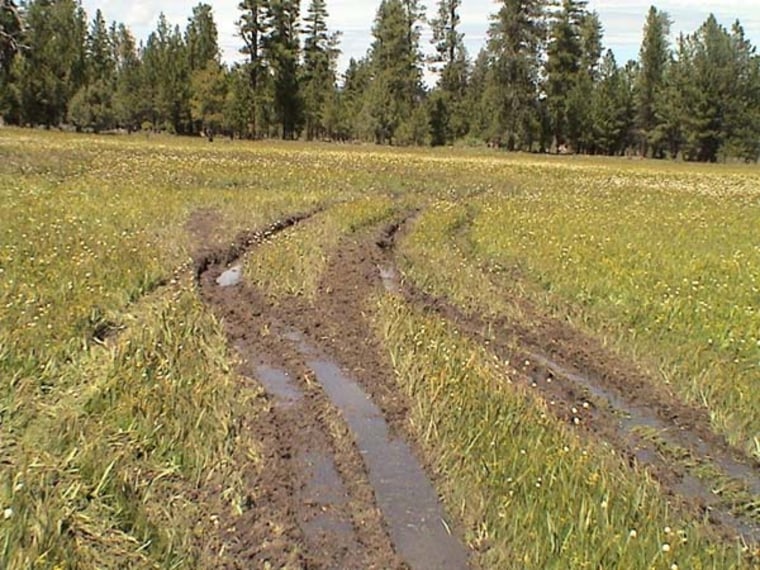After reviewing a U.S. Forest Service regulation released Wednesday, environmentalists complained it would legitimize hundreds of illegal trails carved out by off-road enthusiasts, while an off-road coalition said the policy marked a good start.
The Forest Service said it intends to halt the roughhewn roads and trails that proliferate in public forests due to increased traffic by dirt bikes and other off-road vehicles.
The new policy would require all 155 national forests and 20 grasslands to designate roads and trails that are open to motor-vehicle use. But for the first time, heavily traveled “renegade routes” created illegally by off-road drivers could be designated for legal use.
“Instead of a bold stride, we got a baby step,” said Jason Kiely, director of the Montana-based Natural Trails and Water Coalition. “The practical effect is that you are going to have to take out rogue routes created by off-roaders one at a time.”
The agency said it will take up to four years to designate roads and trails on all 193 million acres of public lands. Each forest or grassland will publish a map of approved routes that riders can use, with penalties specified for riding on unmarked trails.
An environmental analysis would be required on each site to determine potential environmental effects.
Reaction from activists
Environmentalists and other critics said the plan did not go far enough to ensure effective enforcement. In the past three decades, the number of off-road vehicle users has increased sevenfold to about 36 million, causing conflicts with other users such as hikers, horseback riders and the growing number of homeowners who live near national forests.
“This is like throwing a bucket of water on a raging inferno. It’s the right medicine — it’s just not nearly enough of it,” said Jim Furnish, a former deputy Forest Service chief who has been critical of the agency under the Bush administration.
“It’s almost an oxymoron that there is a good illegal route,” he added.
A spokesman for the Wilderness Society said the real test will be in how the final rules are enforced.
“These regulations are not going to be worth the paper they’re printed on if there are not the dollars and the resources to do the planning and enforce the rules,” said Scott Kovarovics, director of the society’s natural trails and waters coalition.
Agency’s rationale
Forest Service officials defended the plan, saying some of the illegal routes have been used for so long they no longer pose a threat.
“Some of the routes have evolved over the years to the point where they are enjoyed by the public,” said Jack Troyer, a regional forester who led the Forest Service team that developed the policy. Routes that cause erosion and other problems will be removed, he said.
Forest Service Chief Dale Bosworth said the new policy encourages off-road enthusiasts to use the forests in an environmentally friendly way.
“It’s my belief that most users want to do the right thing,” Bosworth said.
“Land managers will use the new rule to continue to work with motorized sports enthusiasts, conservationists, state and local officials and others to provide responsible motorized recreational experiences in national forests and grasslands for the long run,” Bosworth said in a statement.
Off-road coalition’s view
Don Amador of the Blue Ribbon Coalition, an Idaho-based group that advocates motorized recreation, called the new policy a good start and said he would encourage group members to participate as the Forest Service designates trails.
Amador called the criticism by environmentalists off-base.
“It’s our feeling that when forests had an open designation, cross-country travel was legal. We feel those (long-established) routes are legitimate, at least for consideration” by the Forest Service, he said.
More than 200,000 miles of forest roads are currently open to off-highway vehicle use as well as more than 36,000 miles of trails.
Bosworth calls unmanaged recreation one of the four major threats facing the Forest Service, along with wildfires, invasive species and loss of open space.
The regulation does not apply to snowmobiles. The Forest Service vowed that “once the designation process is complete, motor vehicle use off these routes and outside those areas (cross-country travel) will be prohibited.”
The new regulation is online at www.fs.fed.us/recreation/programs/ohv/.
